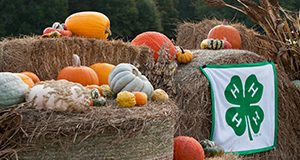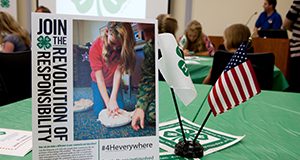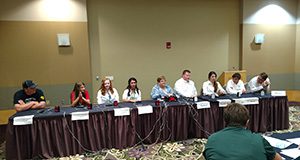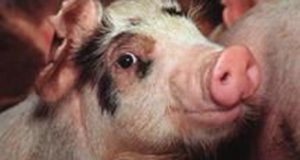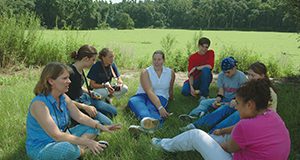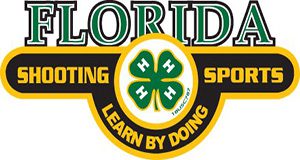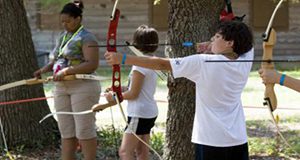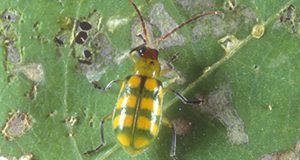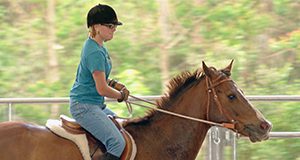Facilities are one of the most important considerations for housing market swine projects in groups. This 5-page document discusses basic facilities requirements, weather protection, spacing requirements, penning arrangements, and fencing materials. Written by Alyssa Schortinghouse, and published by the UF/IFAS 4-H Youth Development Department, September 2020.
https://edis.ifas.ufl.edu/4h410
Tag: 4-H Youth Development Department
Cooperative Unit Systems: 1. Introduction and Raising Market Animals in a Group Setting
Traditionally, organizations such as 4-H have encouraged youth to participate in market animal projects as a way of increasing youth participation and introducing youth to production agriculture. As the demographics shift to a more urban clientele base for 4-H, there are new barriers of entry to market animal projects that were not seen in generations past. To address these barriers of entry, systems such as cooperative animal units have been set up. This 3-page document discusses components and limitations of cooperative animal units. Written by Alyssa Schortinghouse, and published by the UF/IFAS 4-H Youth Development Department, August 2020.
https://edis.ifas.ufl.edu/4h408
Cooperative Unit Systems: 2. Organizational Strategies
This 8-page document introduces the core requirements and organizational considerations for replicating a cooperative animal unit. Written by Alyssa Schortinghouse, and published by the UF/IFAS 4-H Youth Development Department, August 2020.
https://edis.ifas.ufl.edu/4h409
Florida 4-H Community Pride Leader’s Guide
Service learning is an important component of youth development because it allows youth to strengthen their critical thinking skills, leadership skills, and civic and social responsibility. This 5-page Leader's Guide will help you and your club members get the most out of the Community Pride Program. Written by Stacey Ellison and Grace Carter, and published by the UF/IFAS 4-H Youth Development Department, January 2019.
http://edis.ifas.ufl.edu/4h396
Florida 4-H Dairy Quiz Bowl
This 4-page document discusses the 4-H Dairy Quiz Bowl Program, a fun and educational way for young people ages 8-18 to positively develop critical thinking, decision-making, problem-solving, listening, and communication skills. Written by Chris Decubellis and published by the UF/IFAS 4-H Youth Development Department, January 2019.
http://edis.ifas.ufl.edu/4h395
Florida 4-H Dairy Record Book
This 36-page document is an animal sciences publication suggested for 4-H members age 8 and up. This record book is a tool to guide youth in keeping an accurate record of their expenses and other important records pertaining to dairy cattle or dairy goats. Written by Karen Hamilton, Chris Decubellis, Chris Holcomb, and Sarah Hensley and published by the UF/IFAS 4-H Youth Development Department, December 2018.
http://edis.ifas.ufl.edu/4h054
Recommendations for Traceability and Use of USDA Premise IDs for Swine Exhibition at Terminal Shows in Florida
Animal disease traceability has become an increasingly important topic within animal agriculture. This 2-page document describes how Premise Identification Tags can be used for disease traceability. Written by Heidi Hill, Morgan McKinney, T. Langford, Clayton Roland, Charles Carr, and Pamela Hunter and published by the UF/IFAS 4-H Youth Development Department, October 2018.
http://edis.ifas.ufl.edu/4h394
Risk Management for 4-H Youth Development Work: Volunteers and Youth Protection
This 3-page publication is one in the series Risk Management for 4-H Youth Development Work. It focuses on the basic overall precautions that need to be taken by everyone involved with 4-H. Written by Paula Davis, Dale Pracht, Stefanie Prevatt, Janet Psikogios, Kate Fogarty, Jean Hink, and Marilyn Norman and published by the UF/IFAS 4-H Youth Development Department, September 2018.
http://edis.ifas.ufl.edu/4h393
Florida 4-H Archery Record Book
The purpose of this 13-page Florida 4-H Archery Record Book is to help you document your growth, development, and progress as a 4-H member. Written by Julie Pigott Dillard and Gerald Culen and published by the UF/IFAS 4-H Youth Development Department, August 2018.
http://edis.ifas.ufl.edu/4h392
Florida 4-H Air Rifle & Smallbore Rifle Record Book
The purpose of this 13-page Florida 4-H Air Rifle/Smallbore Rifle book is to help 4-H members document their growth, development, and progress in the titular activities. Written by Julie P. Dillard and Gerald Culen and published by the UF/IFAS 4-H Youth Development Department, August 2018.
http://edis.ifas.ufl.edu/4h391
Risk Management for 4-H Youth Development Work: Shooting Sports State Plan and Program Guidelines
This 4-page publication is one in the series Risk Management for 4-H Youth Development Work. It discusses the 4-H Shooting Sports Program, which teaches young people the safe and responsible use of firearms, principles of archery, and hunting basics. Written by Jerry Culen, Dale Pracht, Paula Davis, Stefanie Prevatt, and Janet Psikogios and published by the UF/IFAS 4-H Youth Development Department, June 2018.
http://edis.ifas.ufl.edu/4h390
School-Based 4-H Programming: Getting Started
School-based programs provide an opportunity to youth who would not be able to participate in traditional 4-H club offerings otherwise. If you want to expand your 4-H program in diversity, subject matter, and/or number of youth reached, school-based programming may be the solution for you. This 6-page document discusses school-based programs, differences between school-based programming and traditional club programming, reasons to start school-based programs, ways to work with school sites, and enrollment for school-based program youth. It is part of the 4-H 101 Fact Sheet series. Written by Vanessa Spero-Swingle and Susan Munyan, and published by the UF/IFAS 4-H Youth Development Department, April 2018.
http://edis.ifas.ufl.edu/4h389
Florida FFA Vegetable Judging Competition: A Study Guide
This 7-page guide links to articles about insects that are often used in the Florida FFA Vegetable Judging Competition. Written by Jennifer Lynn Gillett-Kaufman, and published by the UF/IFAS 4-H Youth Development Department, April 2018.
http://edis.ifas.ufl.edu/4h388
Risk Management for 4-H Youth Development Work: Risk Management Checklist

This is one publication in the series Risk Management for 4-H Youth Development Work. This series is intended to prepare UF/IFAS Extension county faculty, staff, volunteers, and youth to satisfactorily complete the important task of providing best practices in risk management strategies. This 4-page document provides a checklist that will help during 4-H event and activity planning. Written by Dale Pracht, Paula Davis, Stefanie Prevatt, Janet Psikogios, and Sarah Hensley and published by the UF/IFAS 4-H Youth Development Department, March 2018.
http://edis.ifas.ufl.edu/4h384
Florida 4-H Shooting Sports Level 1 Instructor Training and Certification: Volunteer Leader Training Series
A successful county Shooting Sports program is not possible without screened and trained volunteers to lead clubs. Before instructing youth in any Shooting Sports discipline and/or assisting on the range, a volunteer must meet the Florida 4-H youth protection screening requirements and complete the Florida 4-H Shooting Sports Level 1 Instructor Training. This 3-page fact sheet discusses volunteer recruitment, training, certification in other Shooting Sports disciplines, Level 2 certification, and job duties. Written by Julie P. Dillard, Heather C. Kent, and Julia S. Kelly, and published by the UF/IFAS 4-H Youth Development Department, January 2018.
http://edis.ifas.ufl.edu/4h382
Risk Management for 4-H Youth Development Work: Pre-Event Planning Guide and Matrix
This is the first publication in the Risk Management for 4-H Youth Development Work series. This series is intended to prepare UF/IFAS Extension county faculty, staff, volunteers, and youth for the important task of providing best practices in risk management strategies. This 5-page fact sheet discusses the matrix, levels of risk, probability that something will go wrong, modifications to the event or activity, and post-event assessment. Written by Dale Pracht, Paula Davis, Stefanie Prevatt, Janet Psikogios, Marilyn Norman, Kate Fogarty, and Jean Hink, and published by the UF/IFAS 4-H Youth Development Department, revised March 2018.
http://edis.ifas.ufl.edu/4h299
Risk Management for 4-H Youth Development Work: Records
This 2-page publication is one in the series Risk Management for 4-H Youth Development Work. It discusses the use of records among 4-H participants. Written by Paula Davis, Dale Pracht, Stefanie Prevatt, Janet Psikogios, Marilyn Norman, Kate Fogarty, and Jean Hink and published by the UF/IFAS 4-H Youth Development Department, February 2018.
http://edis.ifas.ufl.edu/4h387
Risk Management for 4-H Youth Development Work: Crisis Management and Emergency Procedures
This 2-page publication is one in the series Risk Management for 4-H Youth Development Work. It focuses on basic overall precautions to be taken by everyone involved with 4-H. Written by Paula Davis, Dale Pracht, Stefanie Prevatt, and Janet Psikogios and published by the UF/IFAS 4-H Youth Development Department, February 2018.
http://edis.ifas.ufl.edu/4h385
Risk Management for 4-H Youth Development Work: Large Animals-Horses
This 13-page publication is one in the series Risk Management for 4-H Youth Development Work. It addresses the risks involving horses at 4-H events. Written by Saundra TenBroeck, Wendy DeVito, Dale Pracht, Chad Carr, Brittani Kirkland, and Georgene Bender and published by the UF/IFAS 4-H Youth Development Department, February 2018.
http://edis.ifas.ufl.edu/4h383
Risk Management for 4-H Youth Development Work: Records and Contracts
This 2-page publication is one in the series Risk Management for 4-H Youth Development. This document will clarify the expectations and procedures for signature authority regarding contracts within UF/IFAS Extension. Written by Stefanie Prevatt, Dale Pracht, Paula Davis, Janet Psikogios, Marilyn Norman, Kate Fogarty, and Jean Hink and published by the UF/IFAS 4-H Youth Development Department, January 2018.
http://edis.ifas.ufl.edu/4h295
